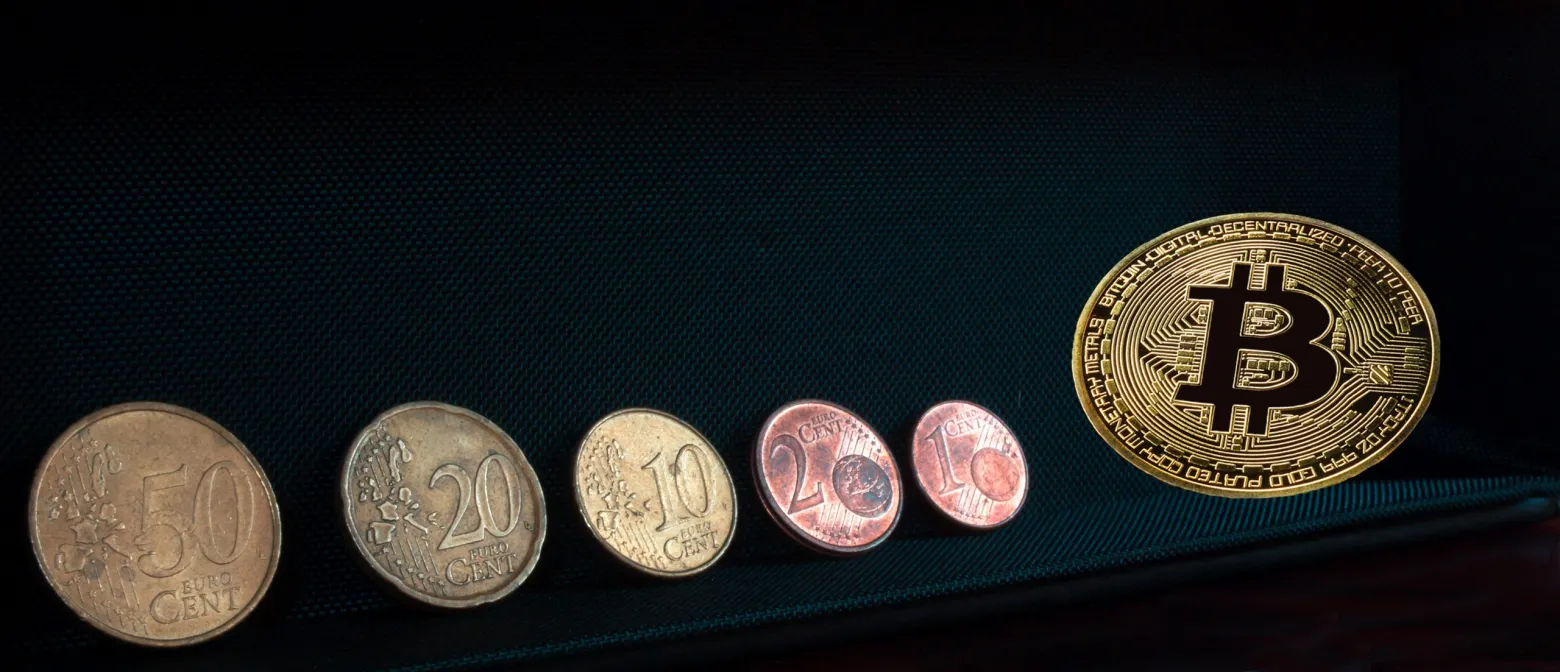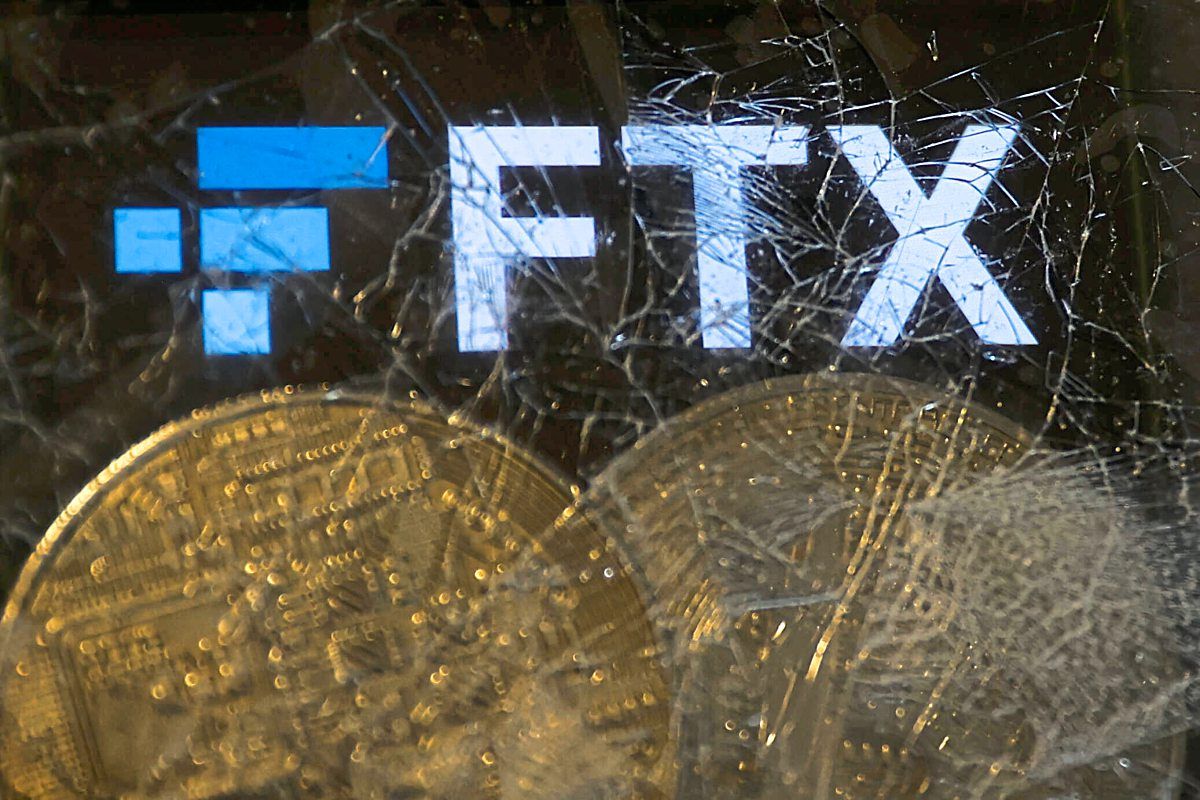Outperforming Bitcoin with a variable cash rate

The Crypto Market in 2022
2022, in short, was not a good year for the crypto market. Bitcoin ended the year down 64%, Ethereum down 68%, and most smaller-cap coins fared even worse. Every crypto fund would have performed the better, the higher its cash rate.
So why was the F5 Crypto Fund invested at such a time?
First, of course, we run a crypto fund designed and committed to offer exposure to the crypto market: the fund was invested in crypto because that is what it does. Yet this response side-steps the question and misses the point: Naturally, the fund is set up as a long-only physical investment vehicle because we chose to set it up this way, and the setup is entirely intentional: we are convinced this is the best setup for a long-run crypto investment, and for good reason. The only way to ensure participating in the enormous upside potential of the crypto market is never to miss upswings.

Crypto returns are as random as coin flips…
Bitcoin returns, like most crypto returns, and like any asset traded in a reasonably efficient financial market, are to a substantial degree unpredictable. In hindsight there is no lack of explanations for what then seems inevitable. But we run the F5 Crypto Fund by scientific standards, and if a view or statement is not corroborated by empirical evidence and scrutinised to the highest standards of cutting-edge data science, we use it at best for anecdotal illustration, never for investment decisions.
It is hard for people not trained in quantitative finance to acknowledge the degree to which daily returns are random. We all wish we could foretell price movements of our most-liked investments more keenly than the weather during our next summer holiday. It is hard to reach Socratic wisdom and admit we actually know — we can know — very little.
Yet these are the facts. Even experts tasked with picking the ten worst performers over the next quarter can end up with a portfolio which outperforms the market. When Paul Krugman, the first Nobel laureate in economics to do so, publicly opined in 2013 about Bitcoin, he predicted that a virtual asset that had quintupled in price in a matter of weeks was bound to collapse any moment. Within a few more weeks, Bitcoin quintupled again. Buying back cheaper after the inevitable correction due after an impromptu spike? Bitcoin has never again fallen below 200€ — and likely never will.
So the bottom line is that exiting the crypto market entirely and trying to time the re-entry is just too risky.
The level-headed approach is to keep exposure and focus on risk management to the degree it is feasible.
This does not mean we take losses lightly, quite to the contrary: All fund managers at F5 Crypto are personally invested in the fund with significant amounts. We do not merely claim to care about investors: we have put our money where our mouth is. What we do differently from most laymen is to value a euro not gained at par with a euro lost. After all, one euro is one euro. Practically speaking, the risks of permanently losing out on 3-digit increases outweigh the risk of temporarily suffering 2-digit setbacks. Because, after all, crypto returns are not entirely random.

… but the coin is not always fair
Both at very short and very long time horizons, there are patterns in the randomness. Both phenomena are well-established in traditional stock markets, just less pronounced. After all, the entire economy grows in business cycles.
In fact, long-run cyclicality is not at all new to the crypto market: Bitcoin dropped more than 80% in 2018, as it had done in 2013, after an even worse drop in 2011 when the the globally leading crypto exchange Mt Gox collapsed. Despite all these crashes, BTC has still turned the less than one euro for which it could be bought in 2011 into more than 33,000€ today. Without doubt, crypto has been the best-performing asset class of the last decade. The decade before mainstream adoption.
In the short run, we observe the opposite regularity: autocorrelation. The probability of a poor return is somewhat elevated following a bad day. The effect is slightly stronger on an hourly basis. (We are not addressing market-microstructure effects, as the fund does not day trade.) The primary reason is slow propagation of information and consequently not perfectly efficient markets.
Is it surprising that in a global market spanning all time zones with 24/7 trading times and significant direct retail participation not all investors react instantly to news? Arbitrage capital of large speculators is still too scarce in troubled crypto markets to completely even out any effect.
The fact that information does not spread instantly renders one major risk-management tool of the long-only setup effective: our variable cash rate.
How does a variable cash rate mitigate risk in a long-only portfolio?
It is easy to see how a variable cash rate is useful given perfect foresight: hold 0% in cash during periods of rising prices, and hold 100% in cash while prices are falling. The logic is the same even if there is only a very slight predictability of returns: temporarily increasing the cash rate when expected returns are lower will, in expectation, lead to outperformance compared to a permanently fully invested strategy.
A major complication in practice stems from the fact that the autocorrelation is not stable over time. So a purely quantitative steering of the cash rate is inexpedient. The key is to identify periods when information processing in the market is likely too slow. Situations like these are most likely when turmoil strikes as unexpected yet complicated, hard-to-interpret events unfold.
In such circumstances, the investment committee of the F5 Crypto Fund goes into alert mode and can actively decide to hike the cash rate temporarily. This way, a sizable fraction of the crypto portfolio is insulated against market drops.
Case study: the Terra-Luna collapse in May, 2022
Terra-Luna was a prominent stablecoin project. It issued UST pegged 1:1 to the USD. The UST price was stabilised via smart contracts that traded UST against the LUNA token, also created by the project. The fully automated system was called an “algorithmic stablecoin” and praised by many, reaching a combined market cap of almost 60bn €.

On May 8th, a speculative attack sent UST down 2% to 0.98 USD. This led to selling cascades of unnerved investors, until in the early hours of May 10th the peg of UST broke, its price tumbling to 0.68 USD. The smart contracts, toiling at restoring the peg, managed to bid UST back up to 0.93 USD, before on May 11th market forces overwhelmed their capacity, depressing UST below 0.30 USD. The key outcome, however, was the printing of unprecedented amounts of LUNA to re-purchase UST. LUNA, which had traded at 86 USD only a week prior, closed May 10th at 18 USD, and fell below 1 USD on May 11th to disappear into nothingness (at the time of writing, LUNA quotes at 0.00006 USD).
This short recap omits many important details, yet it shows: the spectacular collapse resembled more an aeroplane suffering turbine failure than a balloon burst by a needle. What many remember or experienced as momentary was a process that stretched painfully over days – with lots of uncertainty reflected in all cryptos’ prices.
And while the precise impact on the entire market was surely hard to assess, there was no uncertainty in F5 Crypto about the fate of Terra-Luna as early as the peg broke for the first time: anyone who had studied stablecoins academically was fully aware that stabilisation with an endogenous asset constituted an unstable equilibrium, and anyone acquainted with the Diamond-Dybvig model of bank runs (published in 1983) knew that once the stampede sets in, the only stable equilibrium lies in a full breakdown. Which is exactly what eventually happened.
(In all fairness, Diamond and Dybvig received their Nobel prize later in 2022, after the Terra-Luna collapse.)
Moreover, as UST had served a critical role in many DeFi protocols, it became clear over time how far the fallout reached (one project, Kava, had even hardcoded the value of UST to 1 dollar). The bitcoin price, like the crypto market in general, continued its decline well into June.
How did the F5 Crypto Fund react?
Despite the unavoidable delay due to loading assets from cold storage, we increased the cash rate to 43% already on May 10th, selling more assets to further step it up to 47% on May 17th, and finally raising the euro holdings to exceed 55% on May 24th.
The consequence of this sell-off was that in June 2022, at a time when Bitcoin suffered a –38% setback, the F5 Crypto Fund could contain its result to –17%. This was achieved with a diversified portfolio including smaller-cap and thus generally higher-beta cryptos. The (annualised) volatility of the fund at 41% compared particularly favourably to that of Bitcoin at 86% or Ether at 116%.
Case study: the FTX bankruptcy in October, 2022
Unfortunately, 2022 brought a second clear instance when the fund turned to cash: the bankruptcy of FTX and Alameda Research, the crypto exchange and trading house founded by Samuel Bankman-Fried.
While today we know about illicit activities at FTX, prior to its demise the exchange was generally highly regarded for its high-quality platform, the trading house venerated for its success, and Mr Bankman-Fried enjoyed celebrity status for his lobbying efforts on behalf of crypto regulation in Washington.

Most importantly, FTX and Alameda Research were considered to operate independently of each other. On November 2nd, a balance sheet of Alameda Research was leaked, showing that more than a quarter of its 15bn USD balance sheet derived from FTT, the unbacked, centrally controlled FTX-created token.
Doubts intensified over the following days, until on November 6th Binance-CEO Changpeng Zhao announced via Twitter that Binance would liquidate all its 580mn USD worth of FTT. This set into motion a run on FTX deposits, plunging the exchange into a liquidity crisis and resulting in its somewhat ironic offer on November 8th to sell itself to Binance. When on November 9th Binance called off the deal, it became only a matter of time for FTX (together with “approximately 130 additional affiliated companies”) to file for Chapter 11 on November 11th.
The same pattern as with Terra-Luna unfolded: gradually escalating bad tidings about a systemically important actor with a huge potential for cascading effects and collateral damage, combined with a severe blow to investor confidence.
The F5 Crypto Fund reacted decisively: Prepared for the event, as soon as Binance walked away the fund hiked its cash rate above 60% on November 9th alone. By the end of the month, 65% of the assets under management were temporarily safeguarded in euro.
Despite its diversified portfolio, the fund closed November more than 2% ahead of Bitcoin and 4% ahead of Ether (at –14% vs. –16% resp. –18%) at less than half the volatility (38% vs. 81% resp. 118%).
The overall picture: 2022 and beyond
A long-only fund cannot be expected to appreciate in a period when the entire market crashes. And there is no way to be happy about a –52% return for that year. The fact that Bitcoin is down more at –64%, Ethereum at –68%, gives no solace. The only justification for the downside is that it is the unavoidable price for surely participating in the upside.
Currently, the fund’s cash rate is zero (for operational reasons, 1-2% need to be held in fiat). Therefore, should the crypto market face another sudden drop, this time we would not cushion it – initially. However, we have by now proven with almost two years’ worth of track record that we are able to react quickly and willing to take decisive actions when needed. Now we are positioned to fully participate in the more likely scenario: after depression there follows expansion.
The economic significance
A final note: the human brain has evolved to excel at linear relations; it is hard pressed to accurately assess exponential effects. –52% and –64% or –68% appear quite similar at first sight. But returns are exponential, and economically the differences are sizable: To see this, consider the return needed to recover, so that further gains deliver profits: the fund needs to slightly more than double. This is by no means an extreme proposition in crypto markets. In contrast, a Bitcoin investor needs to achieve +177% to break even; ETH needs to more than triple before it has recovered.
If both Bitcoin and the fund go to 4 times their end-of-2022 values, the fund will have made +100%, a Bitcoin investor +44%, less than half the return. And, as mentioned, the fund is set up such that it realistically stands to benefit more from an up-trend in crypto markets than the most stable of all cryptocurrencies, Bitcoin.
Given that this result was achieved mostly by systematically extracting an edge over pure randomness, we can conclude:
Risk management via a variable cash rate, if done correctly, yields sizable benefits.
References:
Diamond, D.W., Dybvig, P.H. (1983). Bank runs, deposit insurance, and liquidity, Journal of Political Economy, 91 (3), 401‒419
